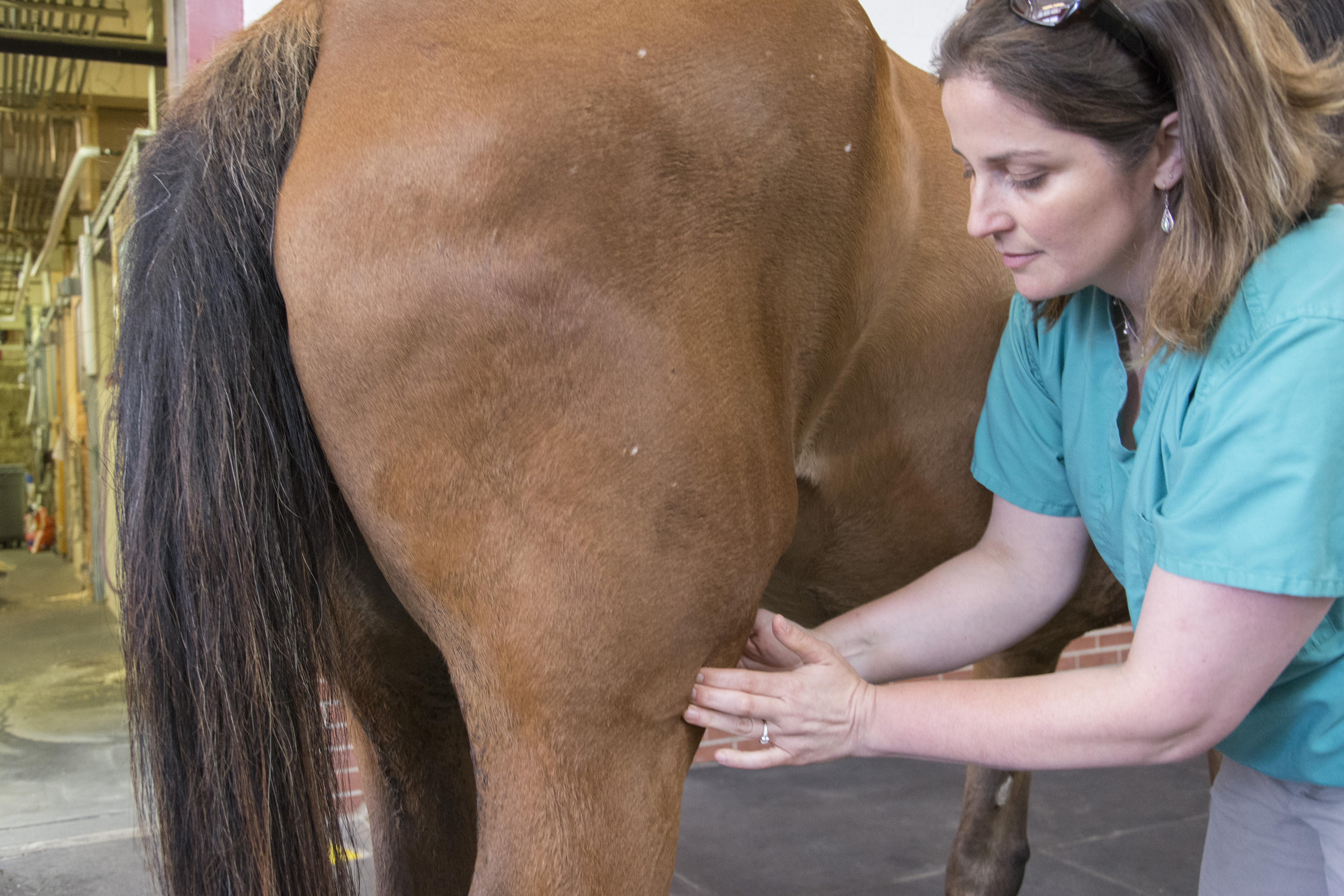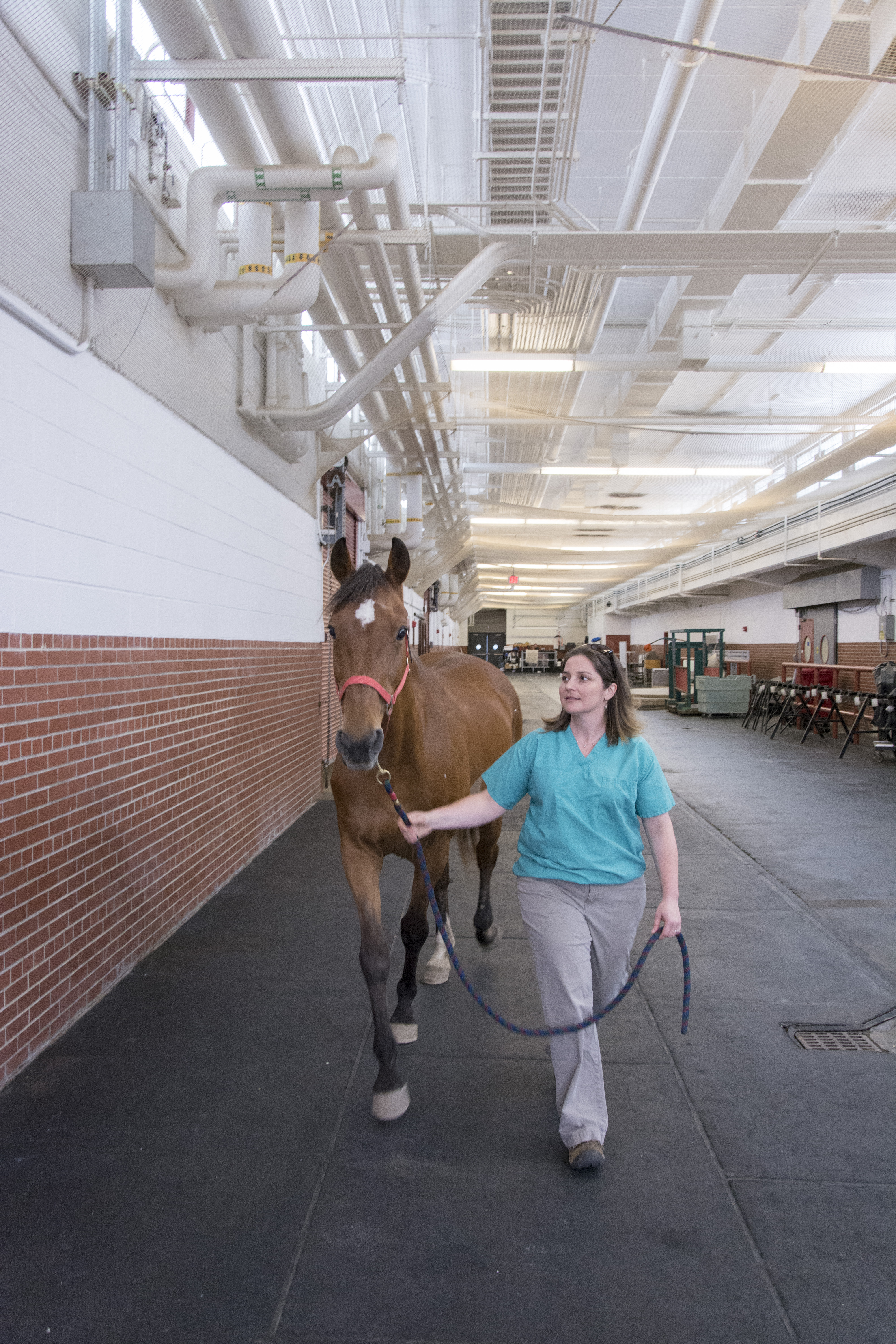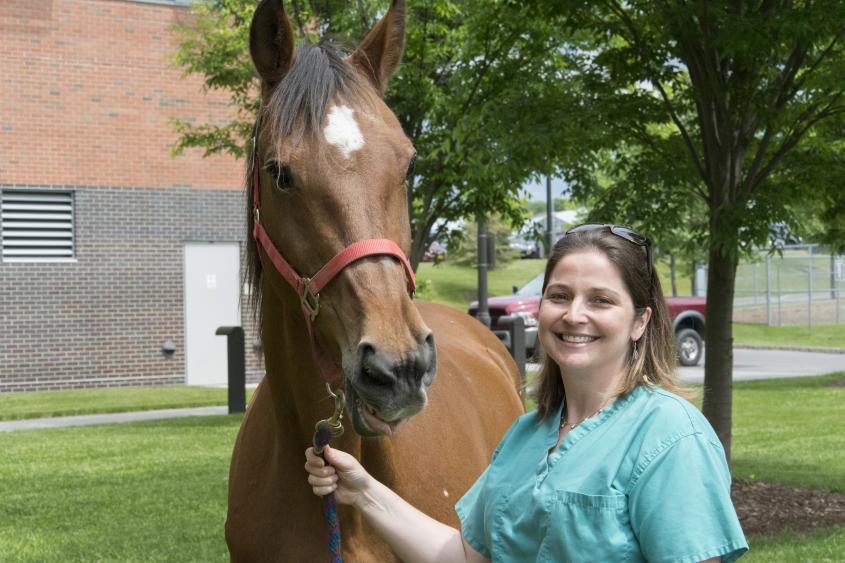Dr. Michelle Delco narrows in on better diagnosis of lameness
Diagnosing the cause of lameness can be a complex process of elimination, involving desensitizing different parts of the limb to see how it affects a horse’s gait. Dr. Michelle Delco, an assistant research professor working with Dr. Lisa Fortier’s group, aims to make this diagnostic process more precise. She is investigating observations that sometimes blocking the stifle joint improves lameness that originates from the lower limb. Delco hopes the findings will improve practitioners’ accuracy in diagnosing the source of the lameness and lead to quicker recovery.
When a numbing agent placed into a joint, called a block, appears to temporarily  cure an uneven gait, it’s a good indication that pain in that joint is the source of a horse’s lameness. Delco occasionally has examined horses where a stifle joint block appeared to improve the pain, but after additional diagnostics, the true location of the lameness was lower down. “If the problem isn’t in the stifle, but is lower in the limb, you’re at risk of missing the correct diagnosis,” says Delco. “The veterinarian could be going down the wrong road, focusing on the stifle joint and doing additional tests that aren’t going to lead to the right answer. In the
cure an uneven gait, it’s a good indication that pain in that joint is the source of a horse’s lameness. Delco occasionally has examined horses where a stifle joint block appeared to improve the pain, but after additional diagnostics, the true location of the lameness was lower down. “If the problem isn’t in the stifle, but is lower in the limb, you’re at risk of missing the correct diagnosis,” says Delco. “The veterinarian could be going down the wrong road, focusing on the stifle joint and doing additional tests that aren’t going to lead to the right answer. In the
worst-case scenario, an incorrect or delayed diagnosis could set up the horse for further injury.”
Delco is working with Dr. Stephanie Regan, a first-year surgery resident, to induce temporary lower-limb lameness in the hind  foot with hoof clamps. “It’s a nice model because the lameness is not very severe and is quickly reversible, like wearing a sneaker that is several sizes too small,” says Delco. They will evaluate the resulting lameness for up to 90 minutes before and after administering anesthesia into the stifle joint. Delco and Regan monitor the lameness with the new Equinosis Q™ system, a user-friendly device that uses three remote sensors
foot with hoof clamps. “It’s a nice model because the lameness is not very severe and is quickly reversible, like wearing a sneaker that is several sizes too small,” says Delco. They will evaluate the resulting lameness for up to 90 minutes before and after administering anesthesia into the stifle joint. Delco and Regan monitor the lameness with the new Equinosis Q™ system, a user-friendly device that uses three remote sensors
to measure subtle changes in the gait – an improvement over previous methods, which require cumbersome equipment and complicated analysis.
While the work is still in progress, the researchers suspect that the migration of the anesthetic after a stifle block may mask lameness that occurs lower in the limb. The work may result in a more nuanced interpretation of the exam with fewer false positive results. “It’s a practical study that has the potential to help equine veterinarians in the field save time and energy, and improve outcomes for their patients,” says Delco.
--By Patricia Waldron





